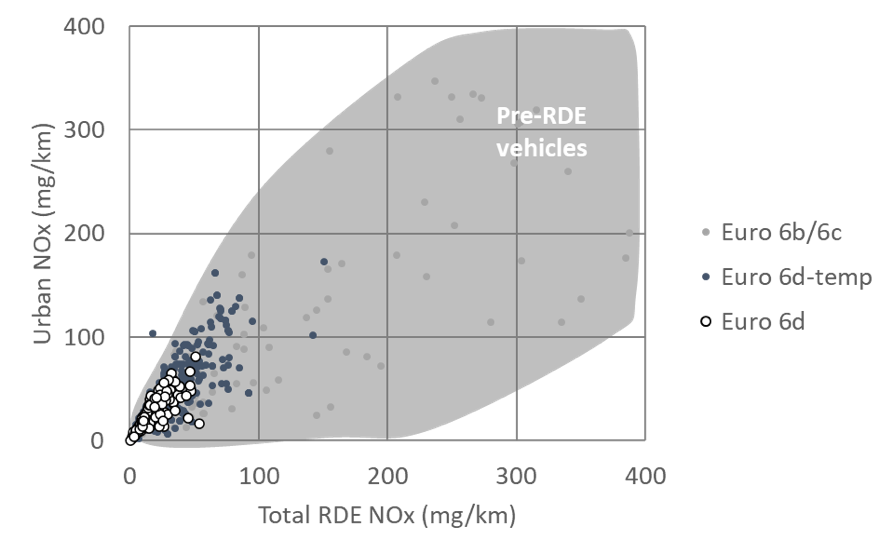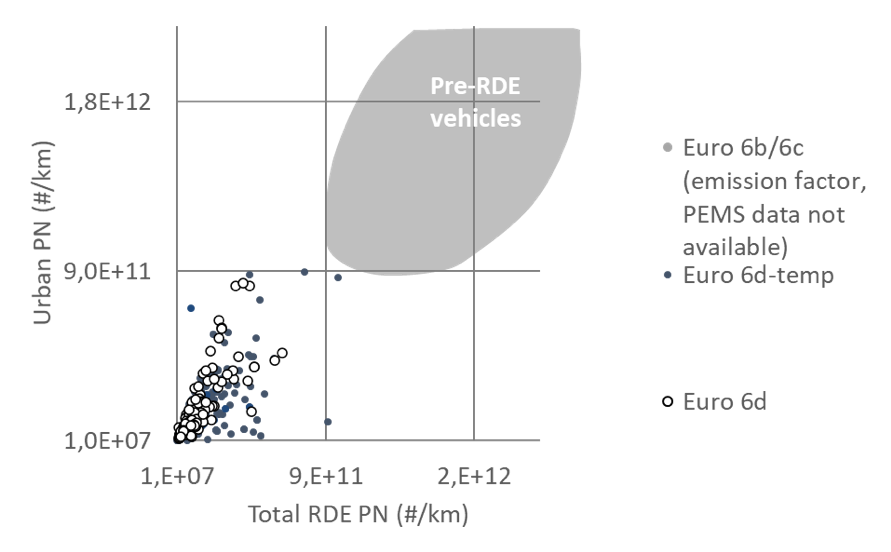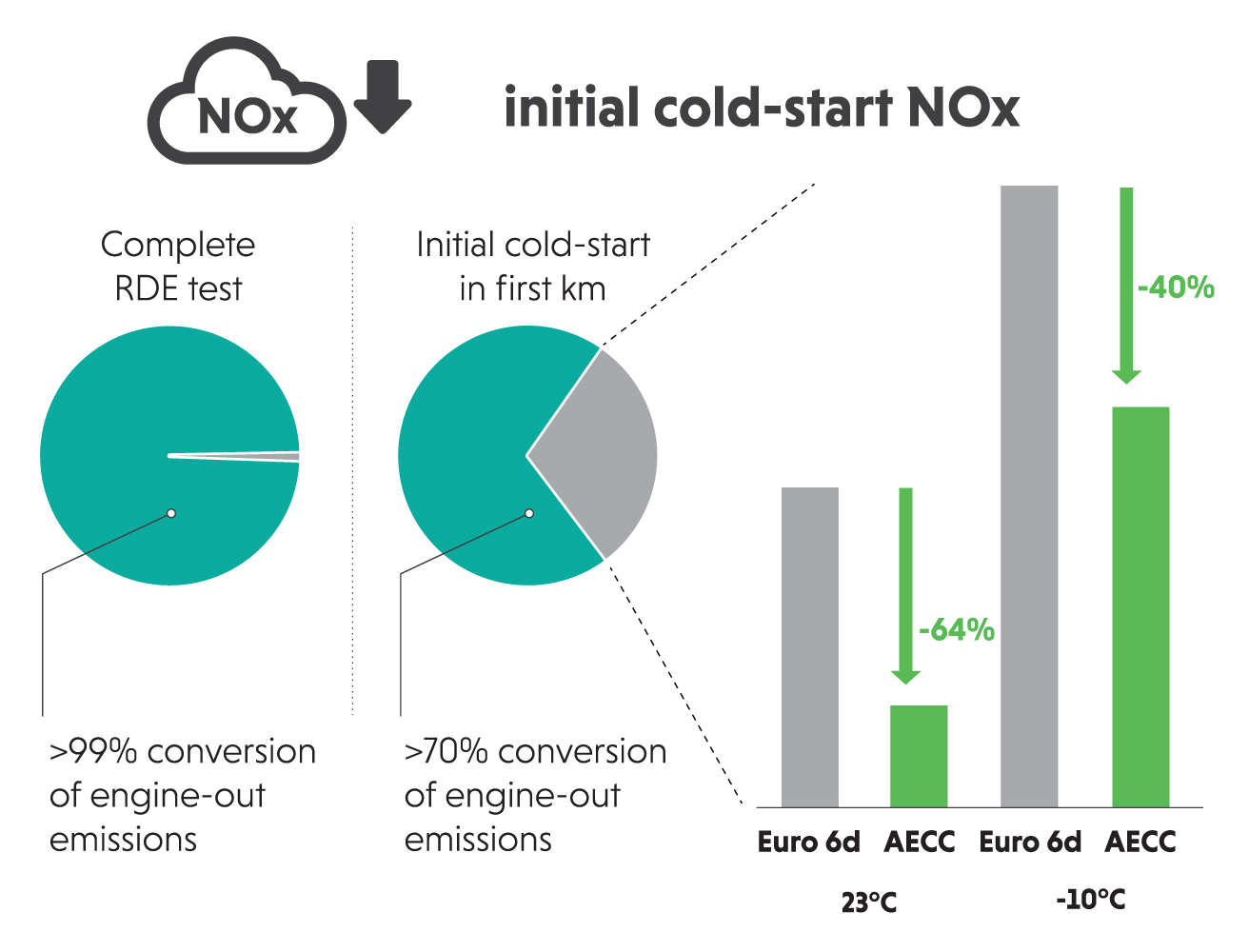Technology for Sustainable Mobility
AECC regularly demonstrates the emissions reductions that are feasible and recently showed that advanced emission control systems can achieve near-zero emissions for NOx and particulates (mass and number) in real-world operation. These technologies are available already. They are therefore an important option among the solutions that road transport will require to successfully ensure a solid pathway towards zero-emission mobility in 2050.
Catalysts, adsorbers and filters are used on new vehicles as part of an integrated approach to emissions control which includes the combustion system, fuel and reductant quality and electronic control systems.
New engine and emissions controls layouts with close-coupled catalysts as well as an increase of the volume of the components are already achieving ultra-low levels of emissions in Euro 6d vehicles.
This chart shows nitrogen oxides (NOx) from diesel cars (Source: ACEA/JAMA PEMS data consulted 17 July 2020).

This chart shows the number of particles from gasoline cars (Source: ACEA/JAMA PEMS data consulted 17 July 2020).

These emissions control systems are extremely durable and effective. They ensure that modern vehicles contribute to improving air quality and are available to help them meet legislated emissions limits in all driving conditions. Emission control technologies are used on all types of engines in machines and vehicles – cars, trucks, buses, motorcycles, construction equipment, boats and railway engines.

The latest generation of these emission control products converts up to 99% of combustion engine exhaust pollutants (HC, CO, NOx and particulates) and is being further developed to control these and other currently non-regulated emissions including nitrous oxide (N2O), ammonia (NH3) and methane (CH4).
Some emission reduction technologies such as particulate filters and Selective Catalytic Reduction (SCR) systems can also be ‘retrofitted’ to suitable older vehicles to improve their emissions performance. Many European Member States and cities have incentive schemes for retrofitting, especially for buses, trucks and construction equipment.